Exploring the impact of multigenerational living on bathroom design
Bathrooms must accommodate users of all ages and physical abilities.

Designed with longevity top-of-mind, Duravit’s array of flexible bathroom solutions accommodate changing lifestyles to support individual wellbeing. These designs boast timeless style without sacrificing functionality in terms of comfort, safety, hygiene and accessibility. All photos courtesy of DURAVIT.

Wheelchair-friendly and ADA-compatible, Duravit’s D-Neo Wall Mounted Sink combines functionality and sleek aesthetics. All photos courtesy of DURAVIT.
In recent years, the concept of multigenerational living has been steadily on the rise and has had a significant impact on various aspects of home design. This trend, which refers to multiple generations living together under one roof, has challenged traditional ideas about space utilization and functionality. With the number of adults over the age of 65 expected to outnumber those 18 and under by 2034 (according the Census Bureau data), economic influences such as the rapid increase in the cost of living have been one of the largest driving factors for this shift. Particularly impacting young professionals, wages are not meeting the current cost of living expenses, especially for entry-level positions, driving many individuals homeward for enhanced financial benefit and stability. Other factors such as rising health care costs and the COVID-19 pandemic have also had a significant impact on this trend. One area that has experienced notable changes in response to multigenerational living is the design of residential bathrooms.
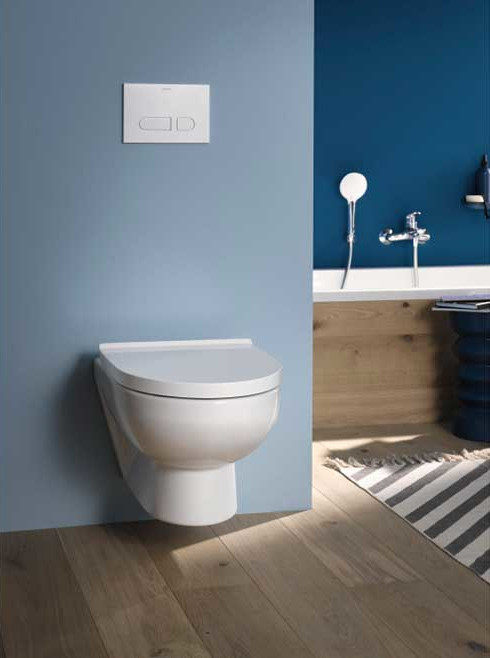
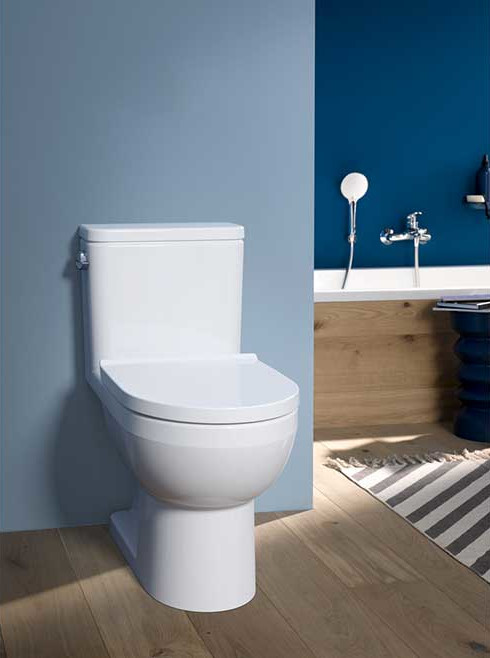
ADA-compatible, the Duravit No.1 toilets include one-piece, two-piece and wall-mounted toilet solutions for versatility across design. Available at a market rate price point, the Duravit No.1 toilet affords extended innovation in hygiene and quality and is equipped with Duravit Rimless flushing technology. Covered in single flush and dual flush options, Duravit No.1 toilets provide attractive solutions with timeless design for any bathroom.
Inclusive design considerations
The increasing number of families choosing multigenerational living arrangements has prompted greater attention to bathroom design that accommodates users of all ages and physical abilities. Mostly impacting middle-class families, professionals straight from college and elderly relatives who can either not afford to live alone or require assisted living, multigenerational housing is often a more affordable and convenient living situation. With different generations having diverse needs and preferences, bathroom spaces today must prioritize accessibility, safety and functionality. For the U.S. market, wall-hung products, specifically toilets, offer inclusivity across their design. The advancement and ingenuity across these products are outstanding and in many cases offer a more stable solution to their floor-mounted counterparts. Wall-hung products also create additional space where space may be limited. Installing a wall-mount toilet will save 4 square feet of space and reduce toilet length by an average of 6 inches across the bathroom space.
Flexibility and adaptability are key when designing bathrooms for multigenerational households. Creating spaces that can be easily modified to cater to specific needs and desires is essential. Some families seek to incorporate elements like removable shower seats, walk-in bathtubs and anti-slip surfaces, however, sinks are often the most overlooked in designing inclusive spaces. While tubs and toilets are standard from an ADA-compatible perspective, sinks often are overlooked. Whether it is in terms of height or depth installed, or the kind of faucet paired alongside, many washbasin installations don’t make sense or fit ADA sink requirements. Homeowners and contractors need to ensure there is enough space underneath and sufficient height to allow for comfortable use across multiple generations. These design choices enhance convenience, allowing individuals of varying abilities to use the bathroom independently.
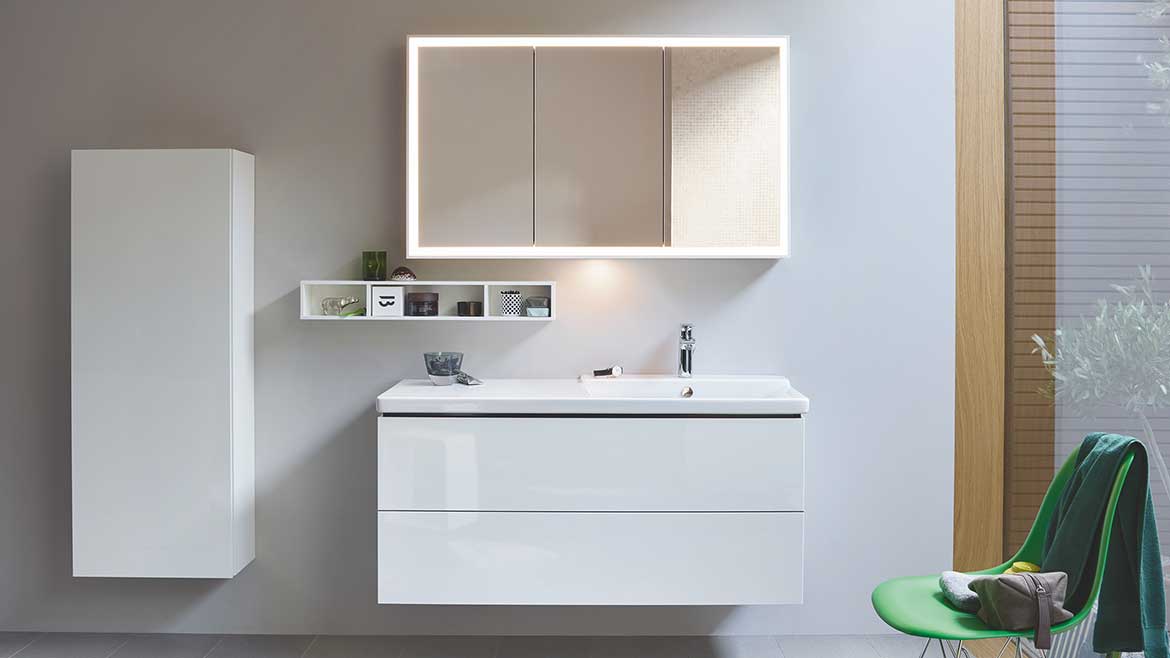
Duravit’s L-Cube collection combines the geometry of sleek, minimal rectangular furniture fronts with maximum style and organization opportunities. Offering a sense of visual calm and relaxation as well as easy to clean fixtures, the L-Cube series creates ambient yet functional bathrooms.
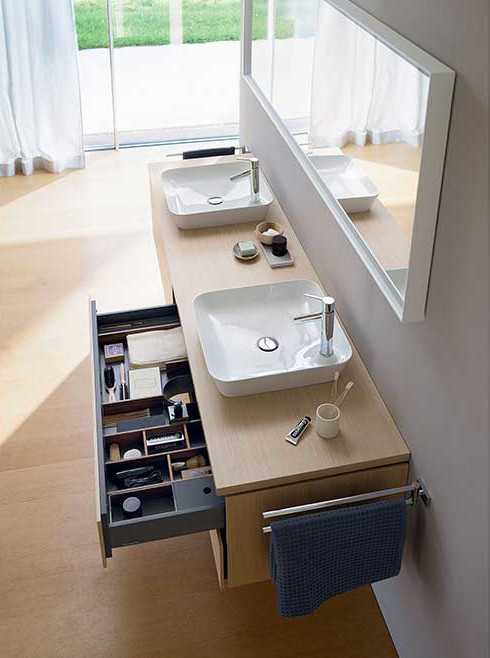
Maximizing space
A constant challenge across multigenerational living is creating enhanced privacy and dedicated personal space so that household members feel at home rather than like a constant guest. With several family members sharing a single bathroom, finding ways to ensure privacy and meet the needs of everyone is a common space challenge. Strategic additions such as separate shower and toilet areas can be an effective solution to reducing these kinds of conflicts.
Properly utilizing space should also be top of mind for multigenerational homeowners. In shared households, secondary bathrooms are often heavily used, so we no longer see premium products solely installed in the primary bathroom but now see expanded bathroom fixtures added to secondary or tertiary bathrooms. These products span from cabinets, vanities, high-performance toilets, multifunction showers and even anti-slip tubs, key product additions that are necessary for creating fully functional bathrooms across multigenerational residences. For existing homes, remodels of primary, secondary and tertiary bathrooms can vary from slight renovations that make huge impacts across the space to major remodels that involve knocking out walls to create an open floor plan. Budget and project scope are the main drivers for larger remodels, but homeowners must continue to ask themselves if these changes would improve the quality of living for the occupants.
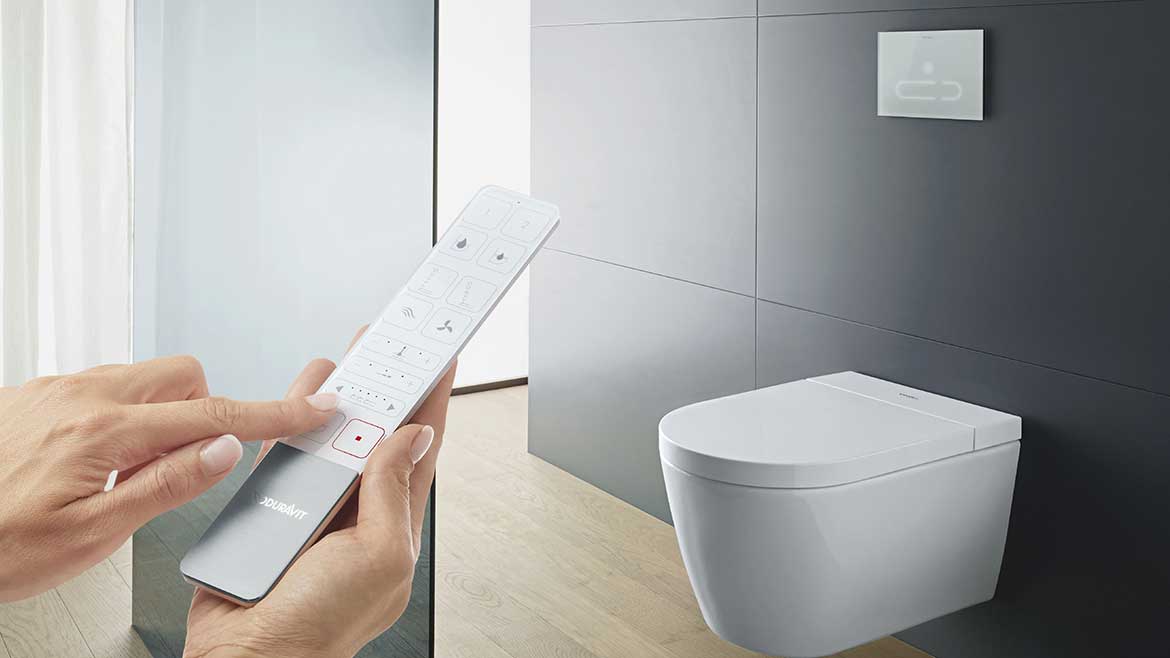
Duravit’s expanded range of industry-leading shower-toilet offerings afford enhanced hygiene and cleanliness to the bathroom. The newest shower-toilet addition to the brand is the SensoWash Starck f, named for its flat and seamless design with internal technological components. Seat heating, odor extraction, nightlight features, automatic seat opening, and more can be controlled to the user’s sensory preferences from a remote or on an app. For effective efficiency and hygiene, SensoWash Starck f has Duravit’s Rimless Technology that rinses the entire surface of the bowl and kills 99.9% of bacteria within 24 hours, setting new standards for cleanliness across the market, the company says.
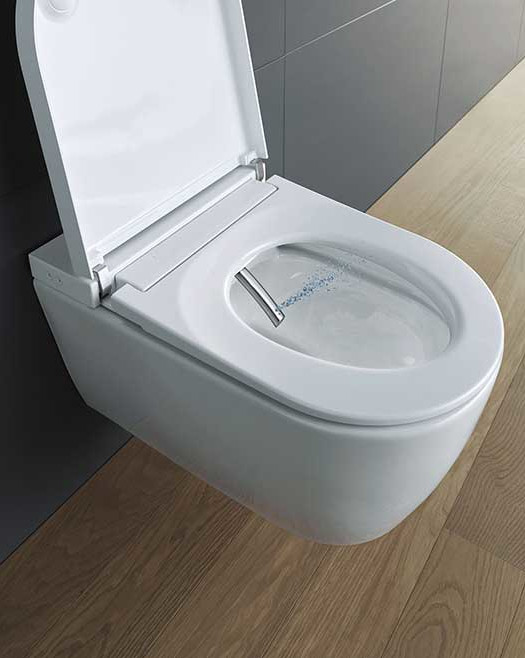
Multigenerational living also heavily influences the style and aesthetics of bathroom design alongside functionality. To create a harmonious blend of personal tastes across generations, incorporating versatile color schemes and timeless materials should be top of mind. Neutral tones and classic designs that appeal to both older and younger users are often favored. By striking a balance between functionality and aesthetics, bathrooms can easily meet the unique requirements of multigenerational living so that it feels effortless to use. For example, towel hook placement. Why would a bathroom have towel hooks across from a shower and out of reach? This is a subtle but often overlooked detail. A bathroom should be a sanctuary, a break from life’s problems and worries, so it should be designed to function as such.
The impact of multigenerational living on bathroom design extends beyond individual homes. Architects, interior designers and manufacturers are paying attention to this growing trend and have seen a rising demand for products and solutions that cater to these households. The integration of smart and innovative technologies offer expanded solutions to enhance the overall bathroom experience for all generations of users for enhanced hygienic and functionality. Specifically, we are seeing a significant upward trend across electronic bidet seats, especially for older persons or those with limited capacity or disabilities. Proven to have health benefits, bidets offer expanded cleanliness and sanitary solutions.
As multigenerational living continues to shape the way we design our homes, the bathroom stands out as an area in need of careful consideration. By prioritizing accessibility, flexibility, privacy and timeless design, homeowners can create bathrooms that cater to the evolving needs of multigenerational households.
Looking for a reprint of this article?
From high-res PDFs to custom plaques, order your copy today!








